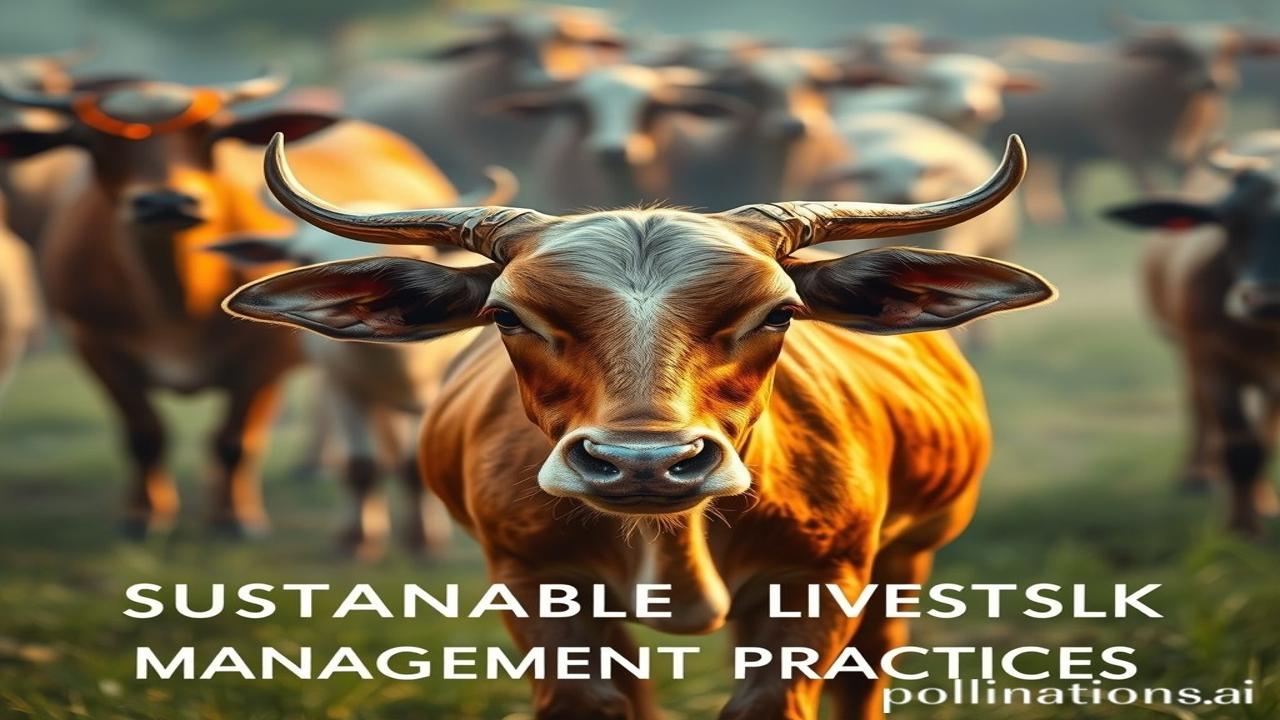Galiyon Mein Goonjti Zindagi: Sustainable Livestock Management Practices
Kabhi socha hai, gaon ki woh dhool bhari pagdandi kaise chalti thi? Un pagdandiyon par bailon ki ghanti ki aawaz, gaay mata ka rambhana, aur shepherd ka lori-jaisa geet. Woh sirf aawazein nahi thi, woh the hamaare jeevan ka ek hissa, a reflection of a symbiotic relationship with our livestock. But kya aaj bhi yeh rishta utna hi mazboot hai? Kya hum sustainable livestock management practices ko apna rahe hain, ya kahin kho rahe hain is daud-bhag bhari zindagi mein?
Pashu Palan: Ek Itihaas
Sustainable livestock management practices, yaane pashu palan ka sahi tareeka, is not a new concept. It’s woven into the fabric of Indian civilization. Think back to the Indus Valley Civilization (3300-1700 BCE). Archaeological evidence shows sophisticated animal husbandry techniques, indicating a deep understanding of animal welfare and resource management. Vedic texts also highlight the importance of গোশালা (gaushalas), or cow shelters, and emphasize the sacredness of cattle. Agriculture, including livestock, provided us food and sustenance.
Why is it important? Simple! The relationship between humans and animals is a delicate dance. Unsustainable practices lead to environmental degradation, decreased animal productivity, and ultimately, threaten our own well-being.
Zamini Sach: Gaon, Kisan aur Pashu
Imagine yourself in a small village in Rajasthan. The sun beats down mercilessly. Meet Ramlal, a small farmer. He owns a few cows and goats, the backbone of his livelihood. Every morning, he takes his animals to graze on the common pasture.
“Bhaiya Ramlal, aaj mausam toh bada garam hai,” calls out Shyama, his neighbour.
“Haan Shyama, lekin kya karein? Gaay mata ko bhi toh pet bharna hai,” Ramlal replies, wiping sweat from his brow.
Ramlal understands that overgrazing is harmful. He practices rotational grazing, moving his animals from one patch of land to another, allowing the vegetation to regenerate. He also collects cow dung and uses it as manure for his fields, enriching the soil naturally. This traditional knowledge, passed down through generations, is the essence of sustainable livestock management.
But the modern world is encroaching. Small farmers are being pushed to adopt intensive livestock farming methods, focusing on maximizing production. This often leads to poor animal welfare, overuse of antibiotics, and pollution. The challenge lies in finding a balance between tradition and modernity.
Dharohar Aur Pehchan: Aaj Ka Bharat
Today, the principles of sustainable livestock management echo in various aspects of Indian culture. The reverence for cows, deeply rooted in Hinduism, is a testament to the recognition of their economic and ecological importance. Ayurveda emphasizes the therapeutic properties of cow products like ghee and milk.
Even in modern times, we see the resurgence of interest in organic farming and natural livestock rearing. Many NGOs and government initiatives are promoting traditional practices, empowering farmers with knowledge and resources to adopt sustainable methods. The ‘गोवर्धन योजना’ (Govardhan Yojana), for instance, aims to promote waste-to-energy initiatives, utilizing cow dung to generate biogas.
Mazedar Tathya Ya Bhram-Bhanjak
Log samajhte hain ki “more milk, more profit” – lekin asli sach yeh hai ki sustainable practices, in the long run, lead to healthier animals, higher quality products, and a more resilient ecosystem. Over-reliance on artificial feeds and antibiotics leads to resistance and affects the nutritional value of the product.
Here’s another myth-buster: गौमूत्र (cow urine) has been touted as a cure-all. While it may have some medicinal properties, it’s not a substitute for proper medical treatment. Scientific research is still ongoing.
Drishya Aur Bhavnayein
The air is thick with the smell of dry earth and cow dung. The temple bells chime in the distance. The touch of a cow’s soft nose on your hand is surprisingly comforting. The sound of crickets chirping in the evening provides a soothing backdrop as you watch farmers tend to their animals with care.
Antim Vichar Ya Uddharan
“वसुधैव कुटुम्बकम्” (Vasudhaiva Kutumbakam) – The world is one family. Sustainable livestock management is not just about animals, it’s about our relationship with the earth, with each other, and with future generations. Let’s remember that the well-being of our animals is intrinsically linked to our own. Let the bells of compassion ring louder than the demands of production.
